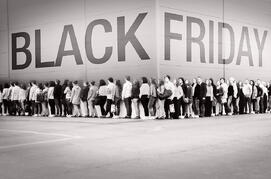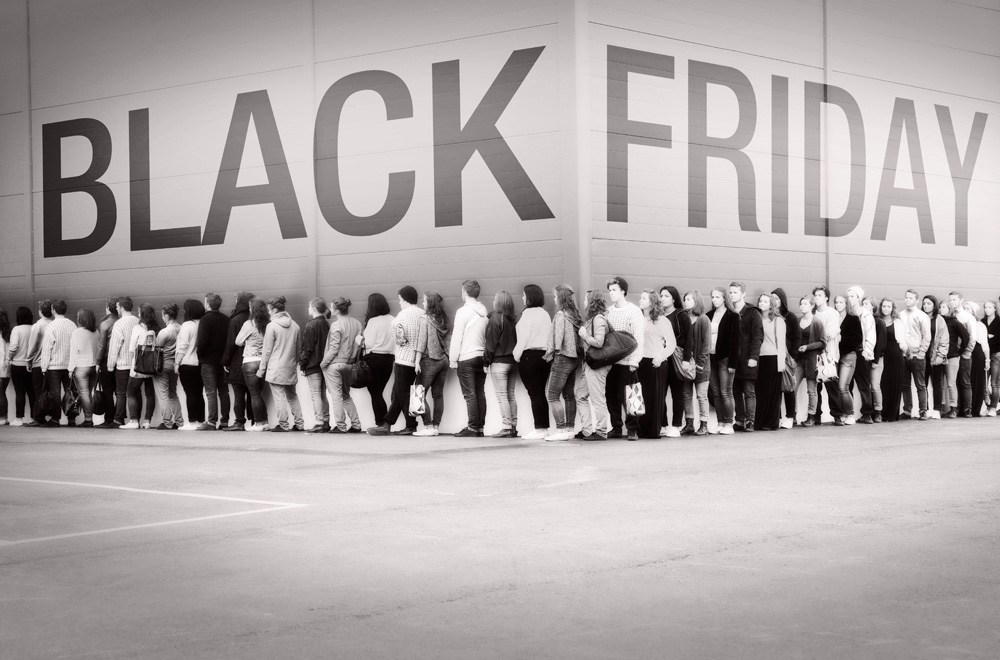 |
As my 2013 Thanksgiving began to wind down, my thoughts turned to the many conversations and articles written about stores opening on Thanksgiving Day. The buzz around turkey-day openings was much louder than last year. Will shoppers come on Thanksgiving? Will the business cover the cost of being open? Will the tryptophan wear off in time to get me off the couch? But as I wrote in an article on Forbes.com last year titled, “Are Retailers Cannibalizing Black Friday,” Sears, Target, Toys R Us and many other retailers opened Thanksgiving Day, so the practice is nothing new.
However, this year, even more stores opened their doors early, including Macy’s who, for the first time in 155 years, opened their doors on Thanksgiving. For all intents and purposes, Black Friday wasn’t just cannibalized, it was devoured. In its place was a weeklong extravaganza that finds Thanksgiving Day/Evening, Black Friday Weekend and Cyber Monday all rolled into one big, confusing promotional free-for-all.
The Game has Changed
With Black Friday now fading from view and replaced with this promotional, days-long extravaganza, the traditional approach to measuring the success or failure of Black Friday is no longer valid. Why? There are several factors that make year-over-year comparisons invalid this time around.
First, rather than the one-day, Black Friday event, consumers saw five consecutive days of promotional activity which took the wind out of the Black Friday sails. Second, Thanksgiving fell one week later than last year, shortening the sales window between Black Friday and Christmas. And finally, a rare, once-in-a-lifetime event occurred where Thanksgiving and the first night of Hanukkah overlapped. The last time this happened was 1888. The result was Christmas shoppers with less time to find the perfect Snuggie or gift card, and for those who celebrate Hanukkah, pressure to complete shopping before the 28th. As a result, retailers needed to prepare for the fluctuations in shopping patterns.
The numbers
Here are some statistics from this year’s Thanksgiving and Black Friday:
First, the good news about the entire Thanksgiving/Black Friday Period:
- According to ShopperTrak, sales for the combined Thanksgiving/Black Friday shopping window increased 2.3% to $12.3 billion
- Store traffic was also up 2.3% to 1.07 billion according to ShopperTrak metrics
- According to ComScore, Cyber Monday 2013 sales were $1.735 billion, an 18.4% increase over 2012.
However, on Black Friday itself, the news was not as good:
- Shopper traffic dropped 11.4% on Black Friday compared to 2012
- Sales decreased 13.2% on Black Friday according to ShopperTrak
It’s no surprise that sales are roughly flat to slightly up in brick and mortar stores, and online purchases continue to climb sharply. It’s also no surprise that Thanksgiving traffic and sales caused Black Friday numbers to decline.
But I’d like to share some different numbers that, from my perspective, tell a different story about the relationship between retailers and their customers.
Outside the Usual Numbers
Much like stores that start playing Christmas music earlier and earlier each year, the “Holiday” shopping “starting line” continues to move back each year as well (for the record, I was in a store in early September and heard “Jingle Bells”). This year, according to a NRF survey in November, 53.8% of shoppers said they started their Christmas shopping in October. Truth be told, with today’s connected consumer, there is no starting line and for that matter, no finish line.
In addition, according to MasterCard Advisors, 70% of purchases made by consumers during this time were made in the first two stores they visited on that day.
Consumers are on a Mission
It has become evident that, not just during the holiday season but year round, consumers are focused on finding the best value for their dollar. With holidays, it doesn’t matter when they get the great deal, as long as they get a great deal. And retailers don’t care when consumers make their purchases in the last quarter, just so long as they make them.
That’s why the importance of optimal pricing “outside” of the holiday season is so critical in today’s retail world. When consumers feel like they have received a great value in the spring or summer from a particular retailer, they will be much more inclined to start there during the holidays.
Retailers that have taken a proactive, strategic approach to ensure the right products at the right price are on the shelf are the ones reaping the rewards and making investors happy.
The bottom line: Delivering products people want at the right price, outside of the holiday season, is the way to win during the holiday season and turn the retailers into the black sooner than “Black Friday”….Opening on Thanksgiving? I can take it or leave it.













